#navajo pictorial weaving
Explore tagged Tumblr posts
Text
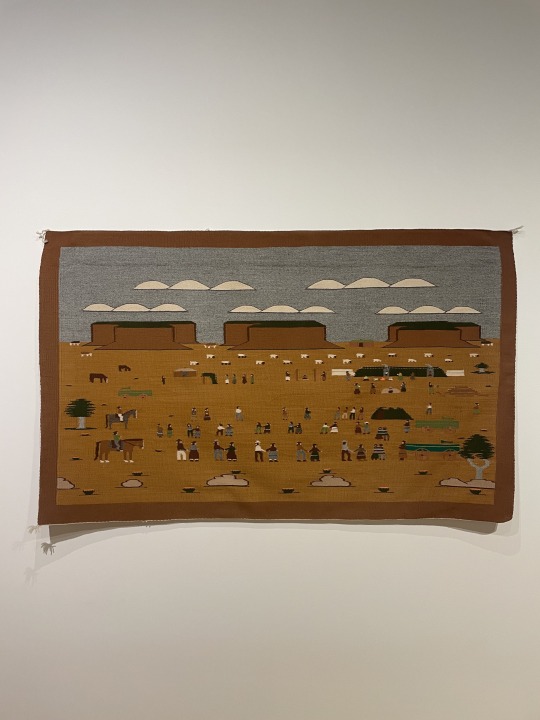
Here's a pictorial rug I really enjoyed by Isabel John (c. 1975).
I want to start collecting pictorial rugs this year and the next. Hit me up if you can recommend good sites for finding rugs for prices that are fair to the artist and yet which a poor author can afford
2 notes
·
View notes
Text
The Art and Craft of Handmade Rugs
In a world increasingly dominated by mass-produced goods, the art of handmade rugs stands as a testament to the enduring value of craftsmanship and tradition. These rugs are not just floor coverings; they are stories woven into patterns, colors that hold the secrets of ancient techniques, and textures that speak of the hands that crafted them.
The History and Tradition
The tradition of rug-making is ancient, dating back thousands of years. Civilizations across the globe have honed this craft, from the intricate Persian carpets to the bold designs of the Navajo people. Each rug carries the heritage of its makers, a piece of history preserved in warp and weft.
Materials and Techniques
The choice of materials in handmade rugs is crucial. Wool is the most common fiber, valued for its durability, warmth, and natural oils that repel dirt. Silk is used for finer, more luxurious pieces, while cotton serves as a sturdy foundation. The dyes, once derived from natural sources like indigo, madder, or cochineal, give the rugs their vibrant hues.
The techniques vary from knotting to weaving. The Persian knot, also known as the Senneh knot, allows for intricate patterns and is a hallmark of quality. The Turkish or Ghiordes knot is equally prestigious, creating strong and resilient rugs. Flatweaves like Kilims, Dhurries, and Soumaks are produced without knots, making them lighter and more versatile.
Designs and Symbolism
The designs of handmade rugs are as diverse as the cultures that create them. Geometric patterns, floral motifs, and pictorial scenes tell stories or symbolize beliefs. In many traditions, certain motifs are thought to bring good luck, health, or protection to the home.
The Makers
Behind every handmade rug is a weaver, an artist whose skill is often passed down through generations. These artisans work for months, sometimes years, on a single rug, tying thousands of knots or interlacing countless threads. Their dedication ensures that each rug is unique, a singular expression of their craft.
The Modern Market
Today, handmade rugs are cherished for their beauty and craftsmanship. They are sought after by collectors and designers, serving as focal points in homes and galleries. The market for these rugs supports artisan communities, preserving their craft and providing a sustainable source of income.
Sustainability and Ethical Considerations
The production of handmade rugs can be both environmentally and socially responsible. Natural fibers and dyes are eco-friendly, and the slow process of rug-making has a minimal carbon footprint. Ethically, it's important to support fair trade practices, ensuring that weavers are paid fairly and work in good conditions.
Caring for Handmade Rugs
Owning a handmade rug comes with the responsibility of preservation. Regular vacuuming, immediate stain treatment, and professional cleaning are essential. Rotating the rug and keeping it away from direct sunlight will prevent uneven wear and fading.
Conclusion
Handmade rugs embody the intersection of art, history, and utility. They remind us of the value of human touch in an automated world. As we tread upon these woven treasures, let us appreciate the stories they tell and the hands that made them. For in every thread lies a connection to the past and a hope for the future.
This article is a celebration of handmade rugs, exploring their history, making, and significance. It's a tribute to the artisans who continue to preserve this beautiful art form, ensuring that each rug is not just a piece of decor but a legacy in itself.
0 notes
Text

Florence Riggs creates stunning pictorial Navajo weavings. Her charming masterpieces feature scenes from Navajo life on the reservation. Source
1 note
·
View note
Text
Texture & Pattern
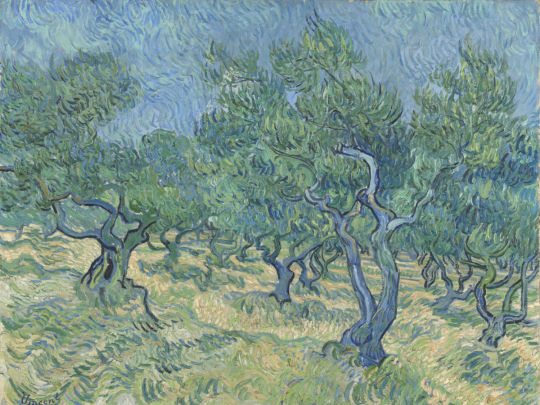
Vincent Van Gogh
Texture Texture refers to the surface quality of an object. Texture is an important component of a successful composition because it appeals to our sense of touch. This is true even when we do not actually touch an object our memories provide the sensory reaction or sensation of what that object might fell like if touched. Texture becomes one more element for us to think about when we look at any composition.
In effect, the various light and dark patterns of different textures are visual clues for us to enjoy the textures vicariously. Of course all objects have some surface quality even if it is only unrelieved smooth flatness. The element of texture is illustrated in art when an artist purposely exploits contrast and surfaces to provide visual interest.
There are two categories of artistic texture - tactile and visual (actual and illusion).
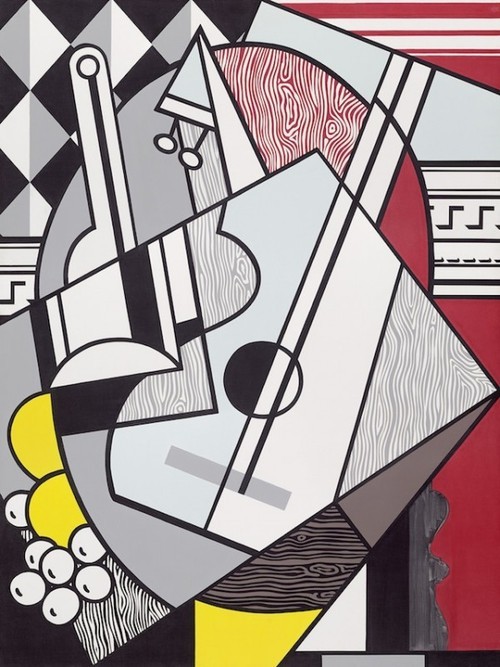
Roy Litchenstien, cubist still life, oil on canvas, 1974
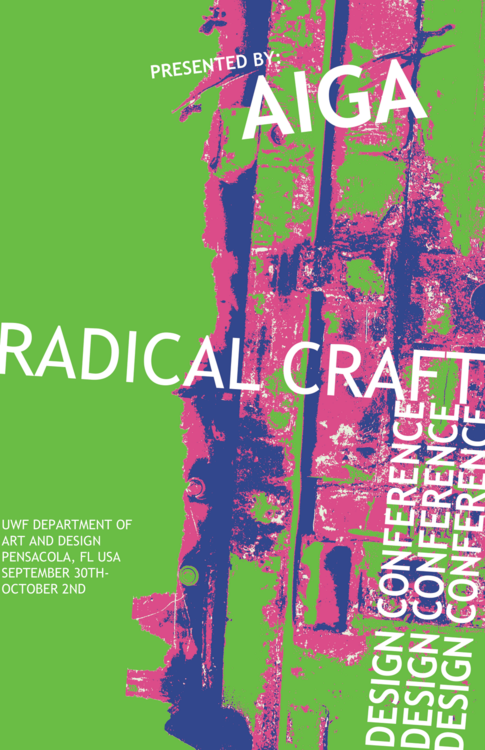
AIGA poster
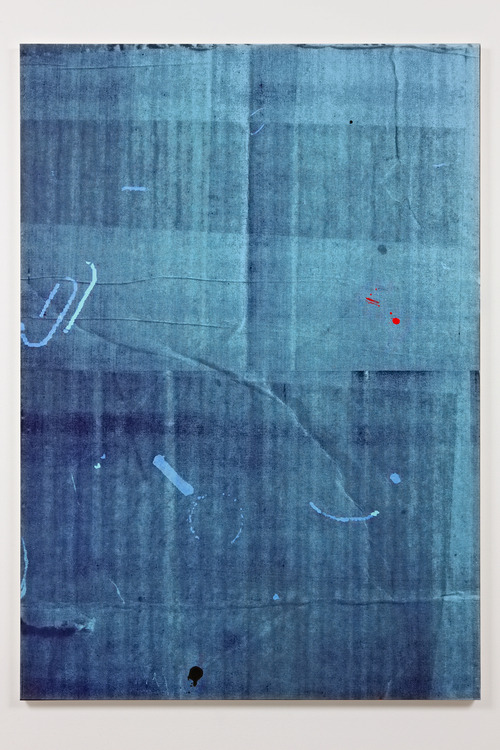
Alex Hubbard, SK 23, Silkscreen print, oil and enamel on canvas /wooden stretcher, 72.05 x 50 x 1.57", 2009
Tactile Texture Tactile texture is texture that can actually be touched. In painting texture describes the uneven paint surface. In graphic design texture can add a sense of reality “realness”. Things that seem more real to life often result in a more emotional response from the viewer, and can in turn be more memorable.
Architecture and sculpture employ actual material and have what is called tactile texture – texture that can actually be felt. In painting the same term describes an uneven paint surface, when an artist uses the paint (a technique called impasto) so that a rough, three dimensional paint surface results.
Consider Vincent van Gogh‘s painting from the top of this lesson. Texture is not just created through the pattern of short brushstrokes, but it is also created through the ridges and phrased edges of the paint strokes that are obvious to the viewers eye. The painting is revealing what it truly is– Paint on surface– Not just an illusion. Same goes for Thiebaud’s painting below:
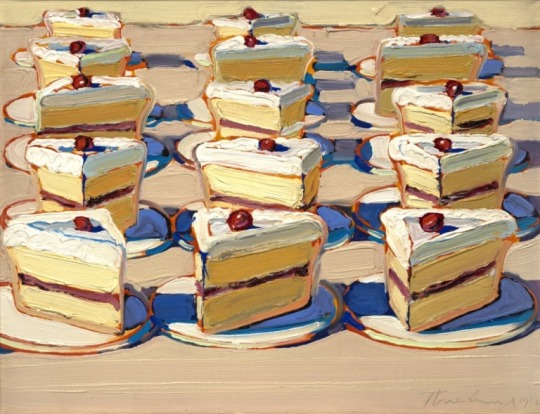
Wayne Thiebaud, “Boston Cremes”, 1962
As we’ve been exploring through this class a traditional idea of a collage is gluing down pieces of colored and textured papers cloth and other materials. Collage moved from a folk art to A fine art in the 20th century. Collage allows us to Play with compositional arrangements more easily by cutting reshaping and altering images and moving them around before pasting them down.
Anne Ryan worked mainly in collages of cloth. Her closet show various bits of cloth and contrasting leaves and textures interspersed with some scraps of printer paper. The light and dark pattern is interesting but her attention is mostly drawn to the contrast of tactile textures. See below:
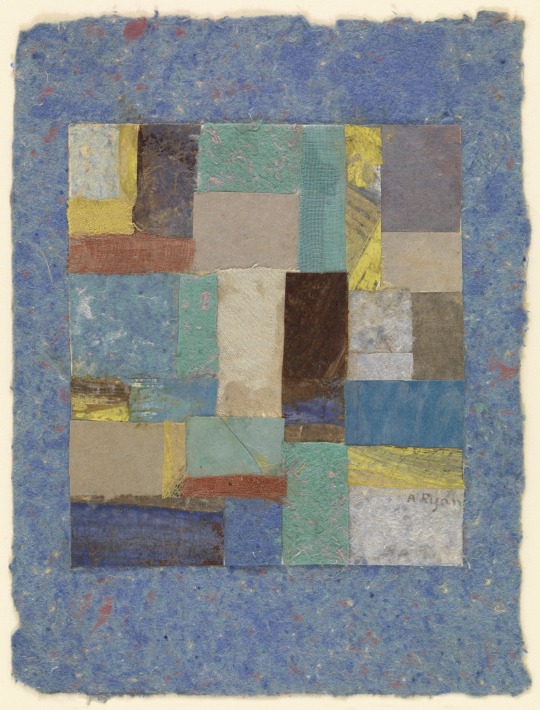
Anne Ryan
VISUAL TEXTURE:
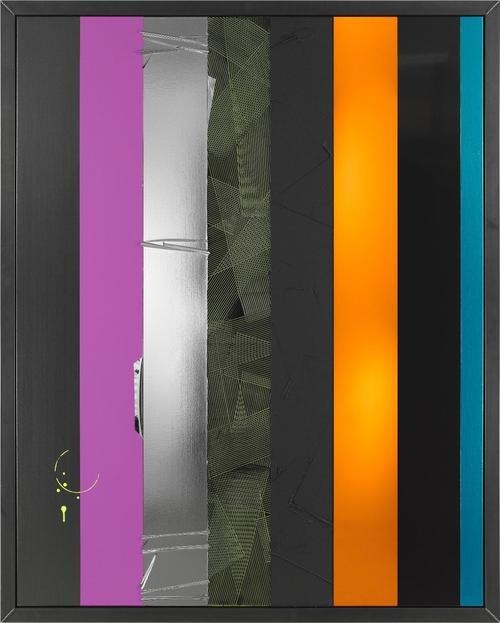
Anslem Reyle, Untitled, mixed media on canvas, metal frame, 256x205cm, 2007
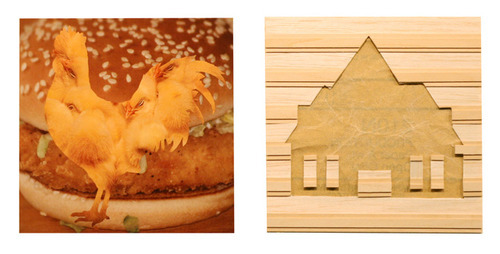
Texture can also be created through the illusion of texture. By reproducing the color and value of patterns of familiar textures, artists can encourage us to see textures where none actually exist. Visual texture carries the same visual punch as Tactile texture. Visual texture can also be created with photography, used on its own or as a filler for a shape, foreground or background.
In painting artist can create the impression of texture on a flat smooth paint surface. By reproducing the color and value patterns of familiar textures painters can encourage us to see textures where none actually exist. This is called visual texture. The impression of texture is purely visual – an illusion - it cannot be felt or enjoyed by touch. It is only suggested to her eyes. Artists use this as a way to stimulate the composition and move your eye around the surface. Various textures can convincingly be re-created. Visual texture can be an interesting design element even without subject matter or any pictorial reference.
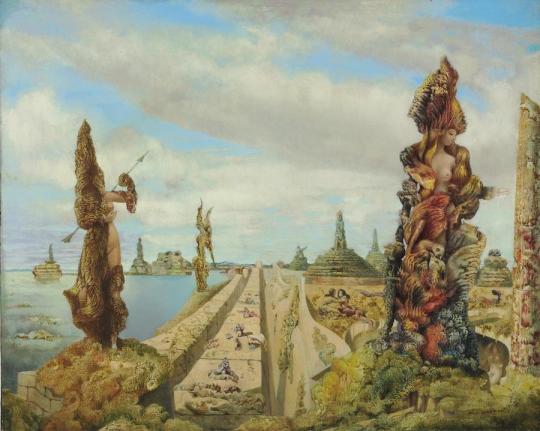
Max Ernst, Surrealist painter
The ultimate point in portraying visual texture is called trompe l’oeil the French term meaning to for the eye. This style is commonly defined as deceptive painting. In trompe l’oeil the objects in sharp focus are delineated with meticulous care. The artist copies the exact visual color and value pattern of each surface. A deception occurs because the appearance of objects is so skillfully reproduce that we are momentarily fooled. We look closer, even though our rational brain identifies the image as a paining and not the actual object.
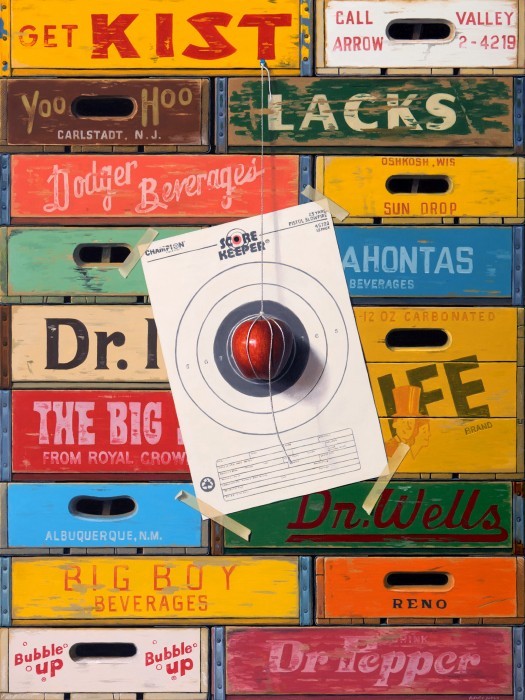
Robert C. Jackson
20th century artistic emphasis has been on abstraction, distortions, and non-objective patterns. But in much art the trompe l’oeil tradition continues And is not limited to painting. Marilyn Levine works in ceramics as seen in “Thom’s Jacket” from 1989 below. it is incredibly realistic but again it’s made of ceramics and is an illusion.
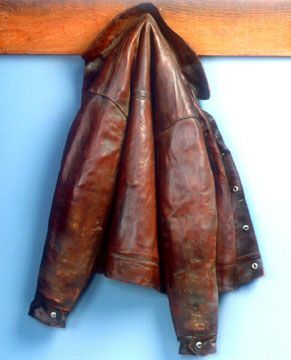
Texture and Pattern It would be difficult to draw a straight line between texture and pattern. We immediately associate the word pattern with printed fabrics such as plaid, stripes, polkadots and floral patterns. Pattern is usually defined as a repetitive design, with the same motif appearing again and again. texture, too, often repeats, but it’s variations usually do not involve such perfect regularity. The difference in the two terms is admittedly slight. material such as burlap would be identified right readily as a tactile texture. Yet the surface design is repetitive enough that a photograph of burlap could be quite a pattern. Once a visual texture is represented within the confines of a space or shape it often may look flat to our eyes and take on the characteristics of a pattern.The essential distinction between texture and pattern seems to be whether the surface arouses our sense of touch or merely provides designs appealing to the eye. While every texture makes a sort of pattern, not every pattern could be considered a texture.
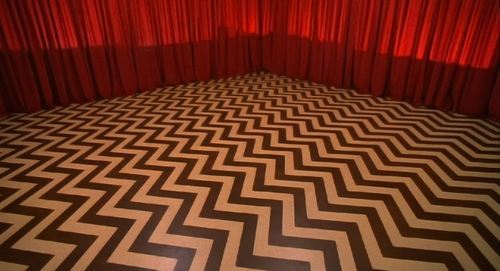
David Lynch, Twin Peaks, film still, 1990
Pattern is a great way to distinguish between areas of contrast on an image and compositions.
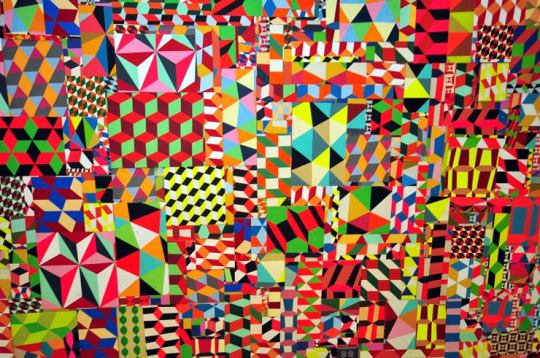
Barry McGee
Pattern inspiration There are many artists, designers, and architects that employ beautiful, intricate and complex patterns. I’ve compiled the “best of” collection to inspire you for your Patterns Assignment. Each image is accompanied by a short description of the artist/designer/architect/etc., and each name is hyper-linked to their website (if applicable), so you can get more details on the people that inspire you the most.
Sol LeWitt, whose deceptively simple geometric sculptures and drawings and ecstatically colored and jazzy wall paintings established him as a lodestar of modern American art.
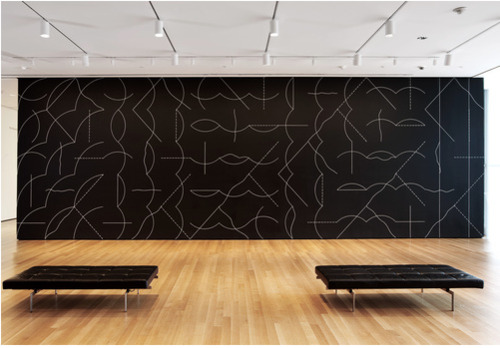
Installation view of Sol LeWitt’s Wall Drawing #260 at The Museum of Modern Art, 2008. Sol LeWitt. Wall Drawing #260. 1975. Chalk on painted wall, dimensions variable. Gift of an anonymous donor.© 2008 Sol LeWitt/Artists Rights Society (ARS), New York. Photo © Jason Mandella
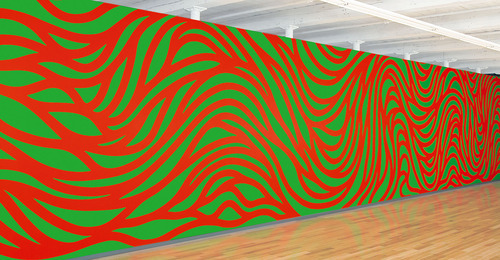
Sol LeWitt, Drawing 915.013
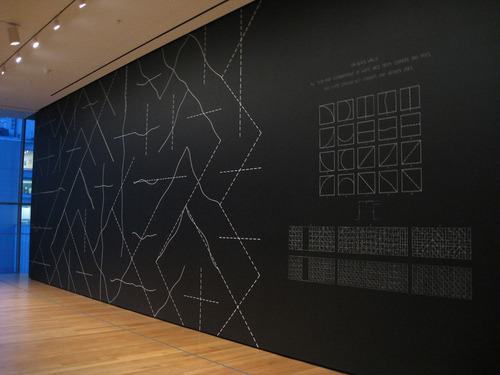
Sol LeWitt, Wall Drawing #260
Le Corbusier (born Charles-Édouard Jeannere) was a Swiss architect, designer, urbanist, writer and painter, famous for being one of the pioneers of what now is called Modern architecture or the International style.
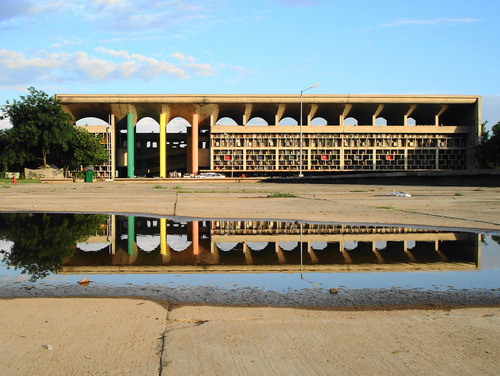
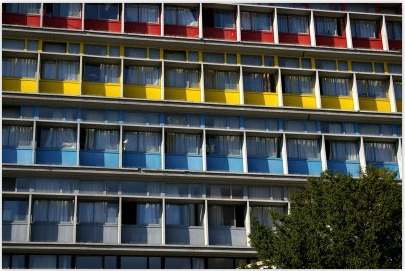
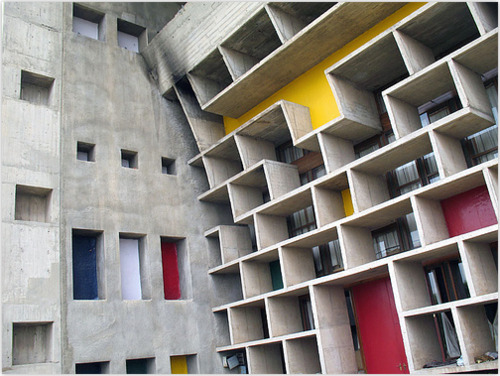
Bridget Riley British painter and designer. She shows a complete mastery of the effects characteristic of Op art, particularly subtle variations in size, shape, or placement of serialized units in an overall pattern.
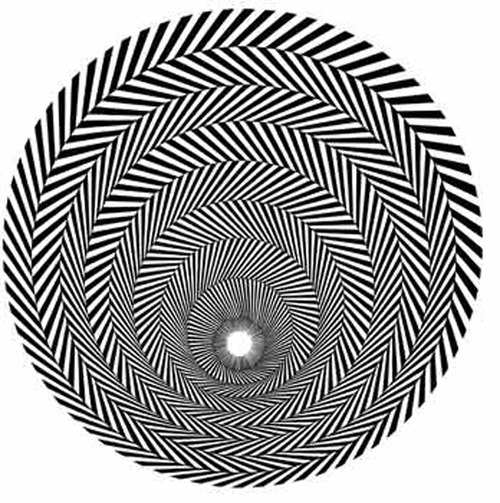
Bridget Riley,
Blaze 1, 1962
, Emulsion on Hardboard, 43x43 in
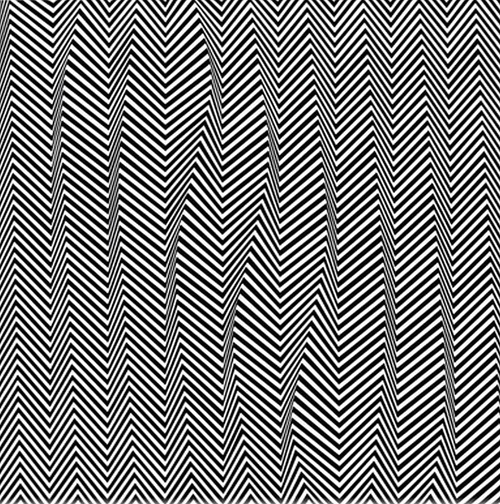
Bridget Riley,
Descending, 1965,
Emulsion on Hardboard, 36x36 in.
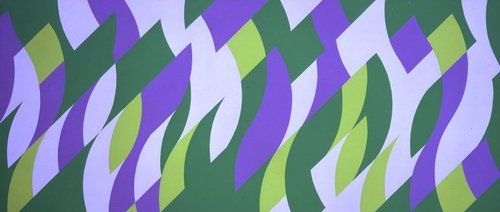
Bridget Riley, Parade I, 1999-2000, oil on linen, 89 5/8 x 206 ½ in / 227.7 x 524.5 cm
Robert Zakanitch paints lace and embroidery. His patterns are beautiful and speak to the shifting instability of texture.
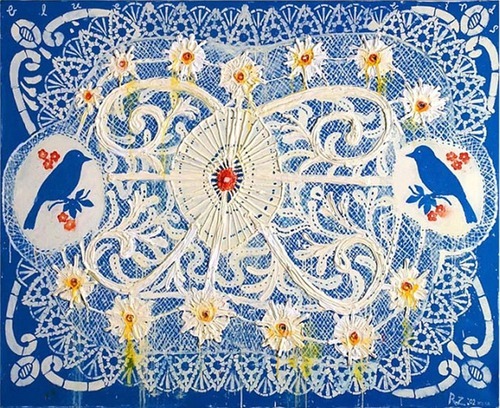
Blue Birds (Lace Series) oil on panel, 2001.
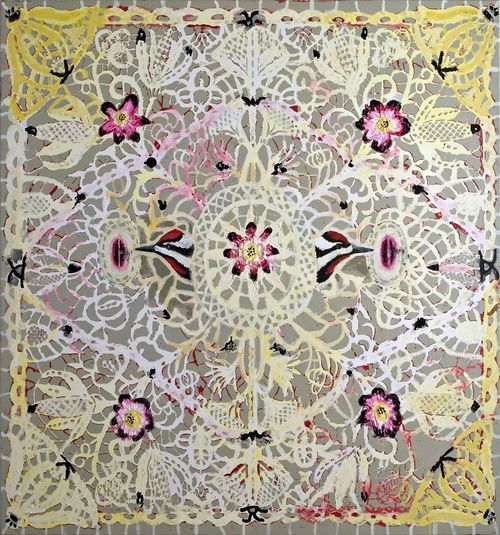
Flowers doily painting. Robert Zakanitch
Take a close look at the figure-ground relationship in the works by M.C. Escher, who is most known for his impossible architecture and landscape drawings, showcasing his play on perspective and point of view to create structures which ultimately cannot exist. I have always been more captivated by Escher’s pattern works. His ability to create a fluid and seamless plane of repeated images fitting perfectly together is both unrivaled and inspiring.
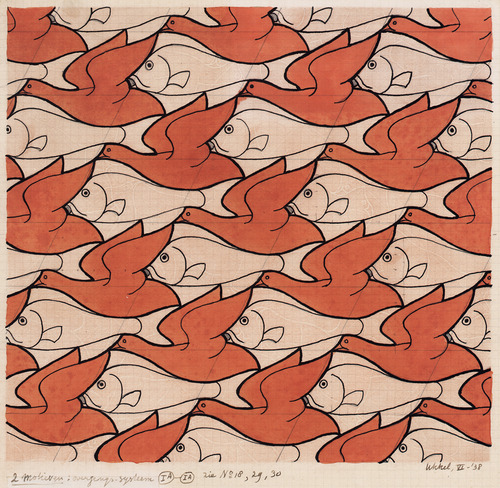
Bird/Fish, June 1938, Drawing, 228 x 243 mm (9 x 9 5/8’’)
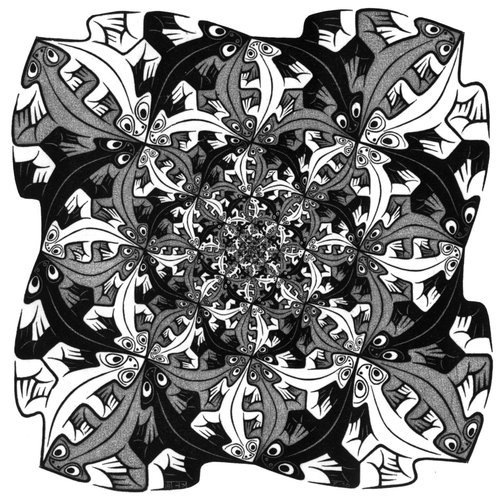
Smaller and smaller, drawing 1956.
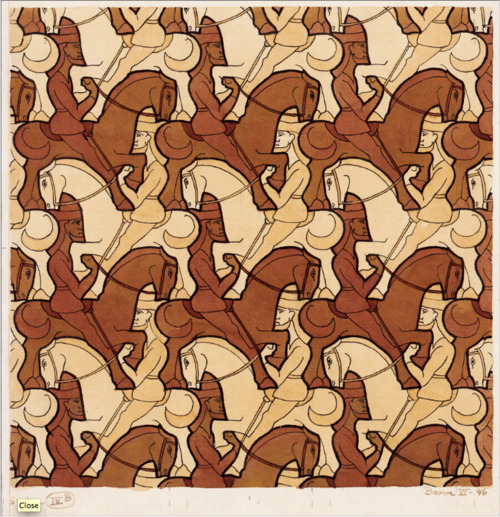
Horseman, June 1946, Drawing, 213 x 214 mm (8 3/8 x 8 3/8’’)
Another great example of pattern can be seen in Islamic art & architecture.
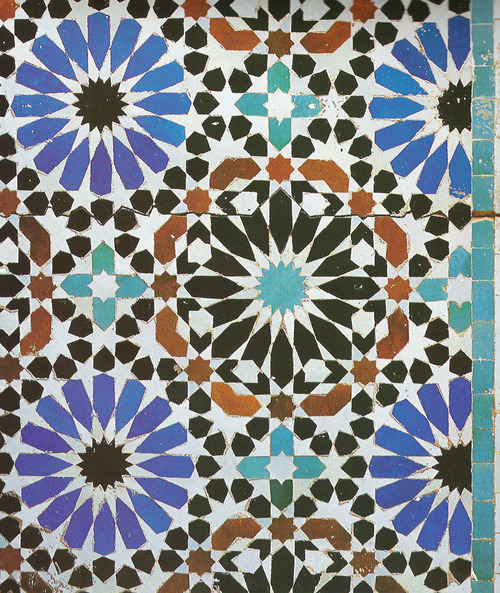
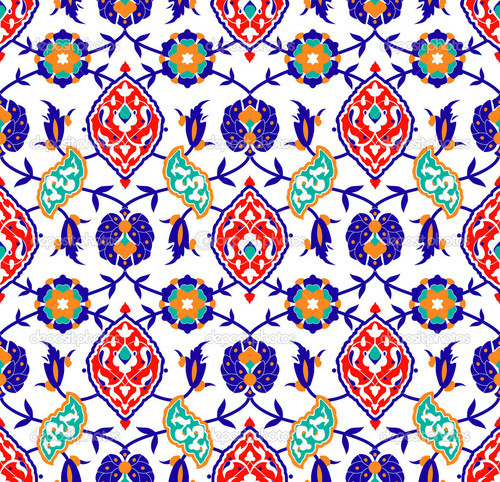
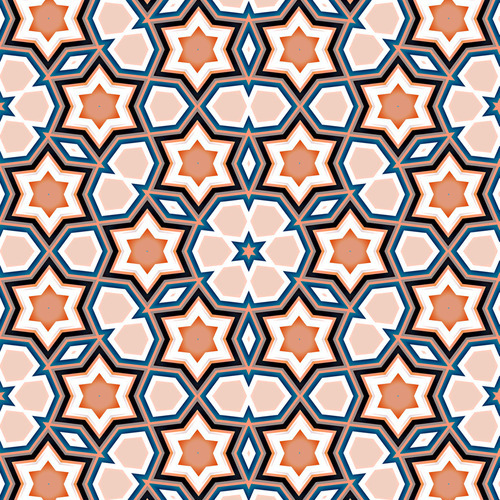
Japanese paper is another beautiful source for pattern inspiration.
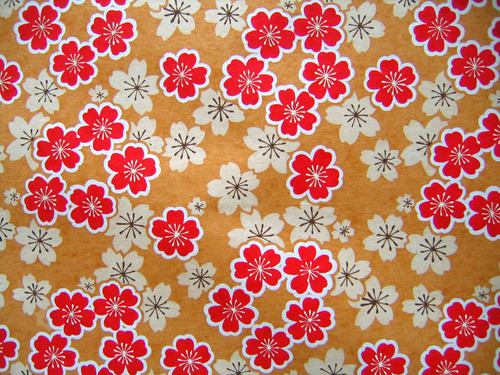
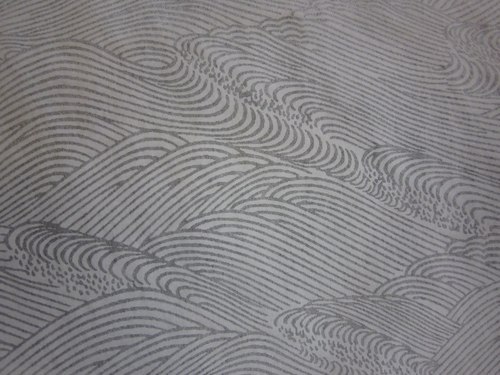
Navajo Weaving has a unique look, drawing from its Spanish and Pueblo history and nomadic way of life.
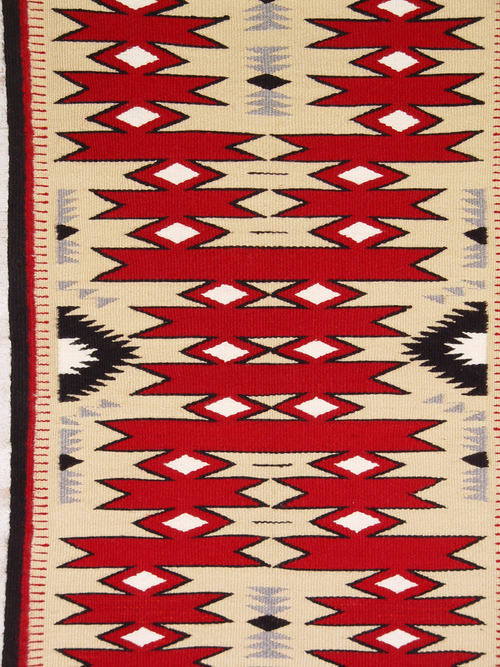
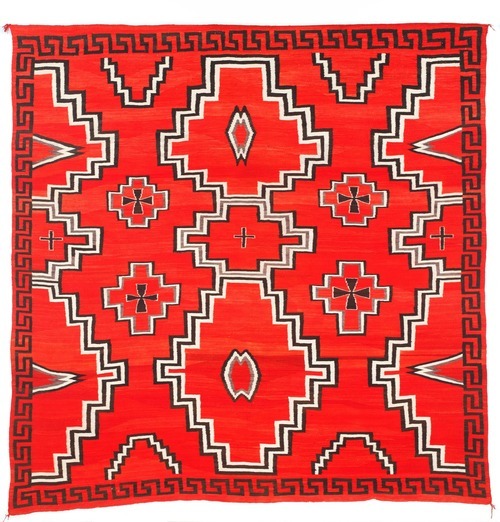
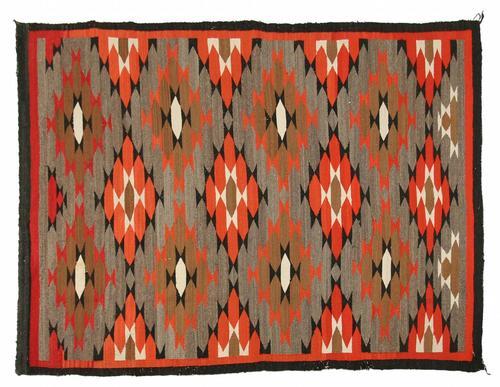
Traditional Amish Quilts lend patterns that have beauty in simplicity. Modern quilt artists are using black with solid colors and discovering the beauty in such basic designs.
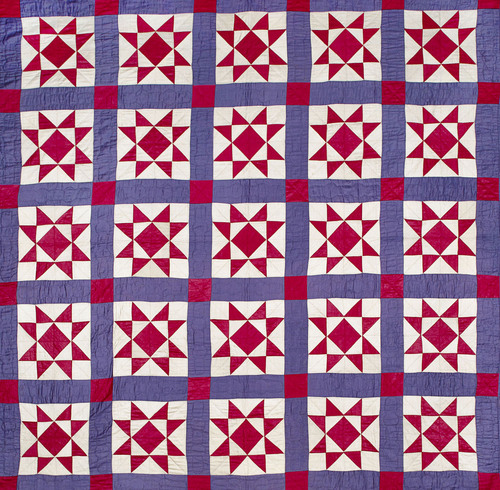
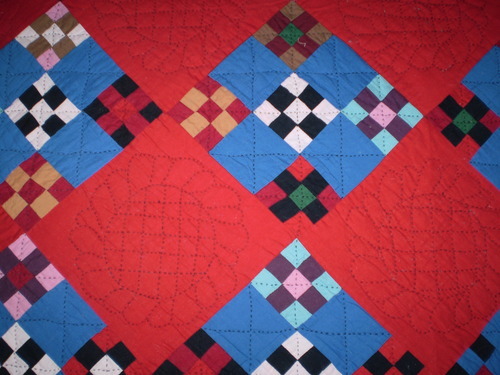

Stephen Westfall
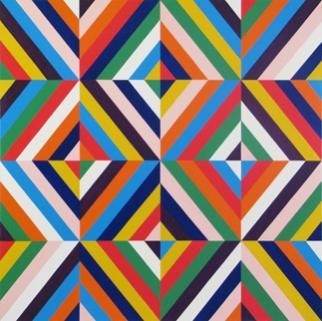
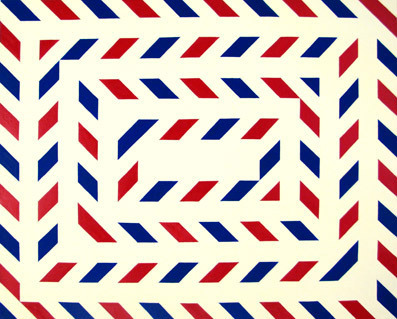
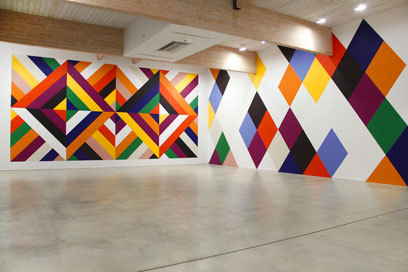
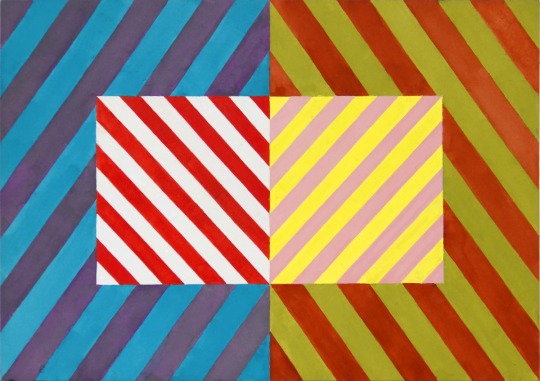
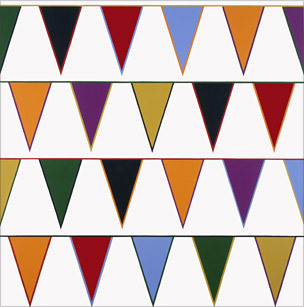
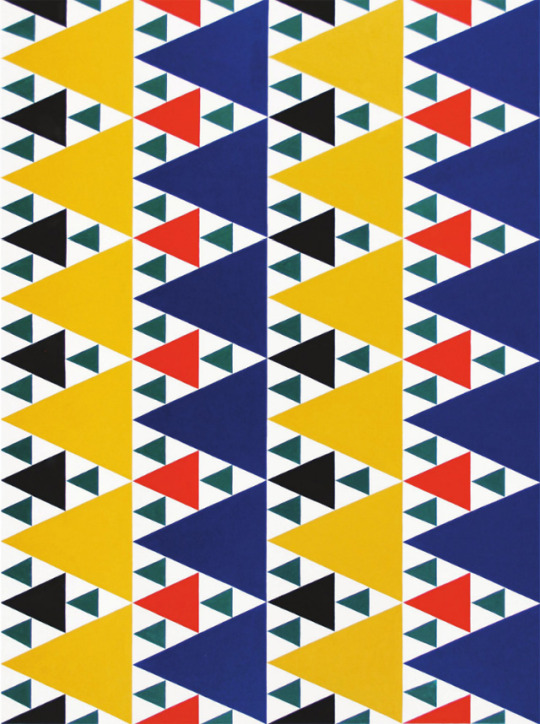
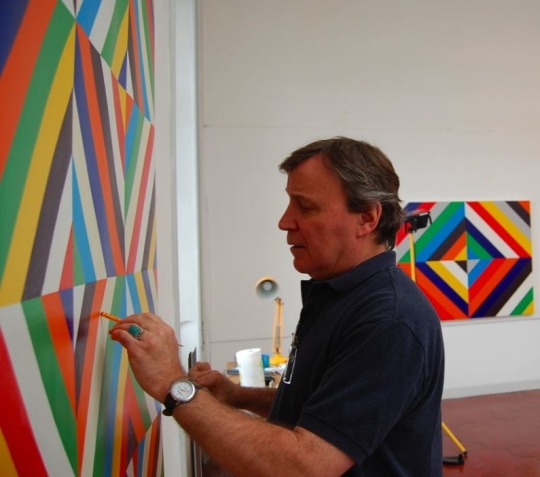
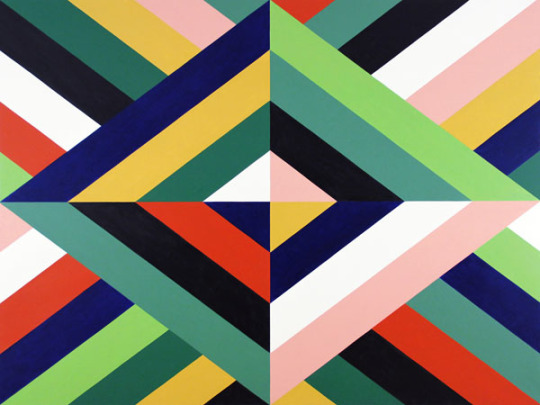
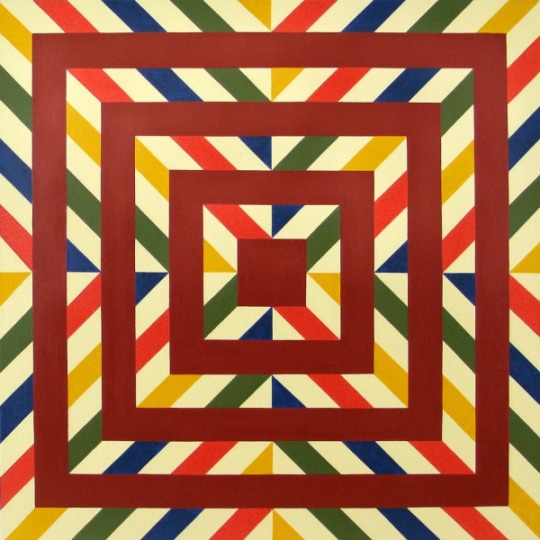
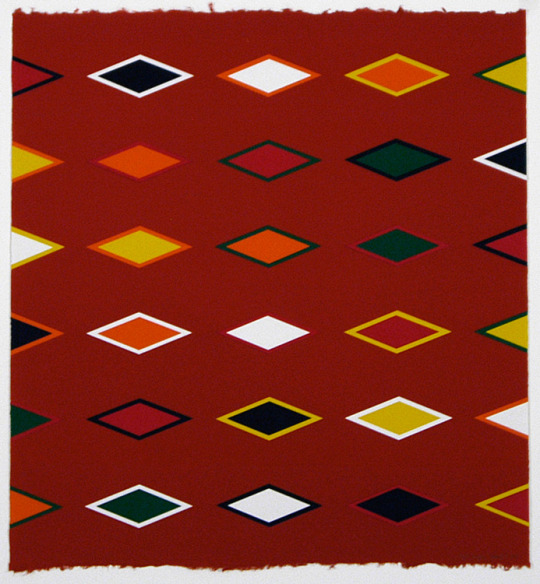
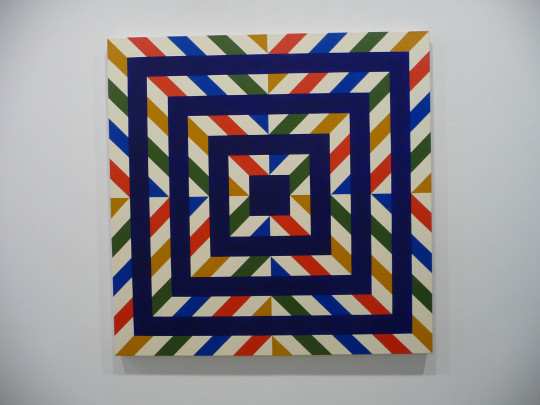
African Textiles are infused with spiritual and mythical meaning in the actual pattern designs on the cloth. Specific patterns are also used as a form of identity with each tribe having their own unique patterns.
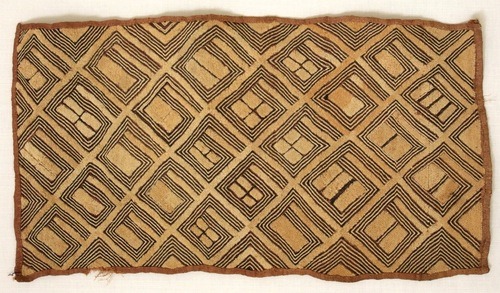
A man’s cloth of the Asante peoples, Ghana, c. 1960. Photo: E. G. Schempf.
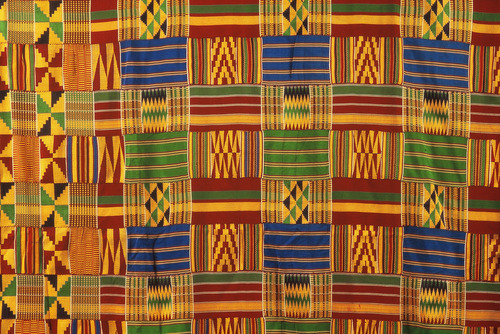
A man’s cloth of the Asante peoples, Ghana, c. 1960. Photo: E. G. Schempf.
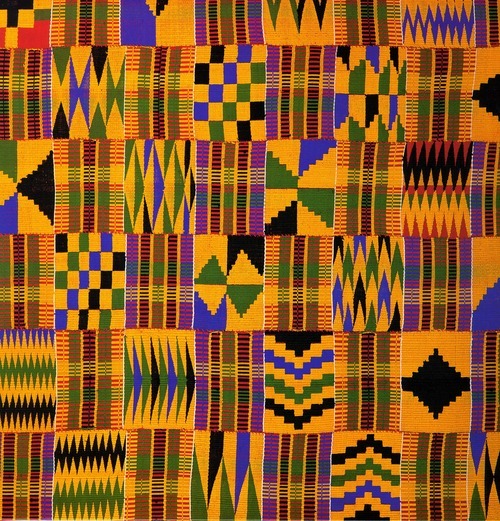
Kente Cloth, Woven by men on a narrow loom. Found among the Asante in Ghana and associated with royalty. Both silk and cotton are used.
El Antasui
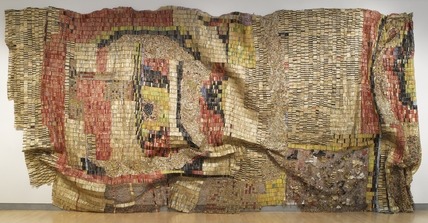
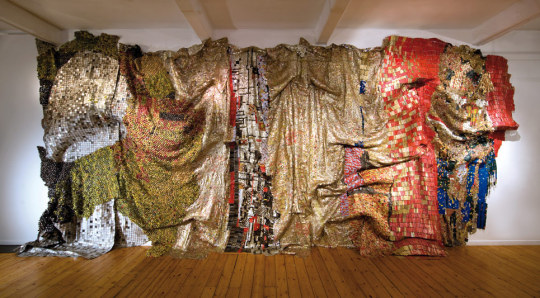
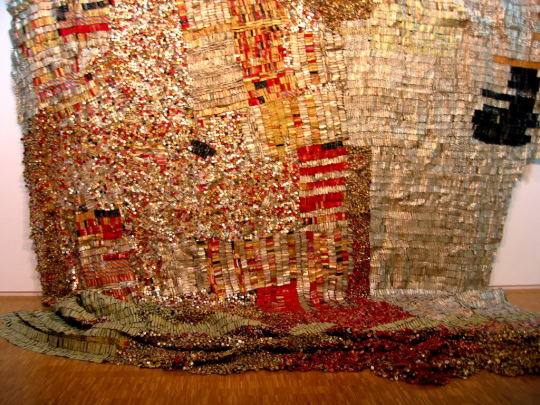
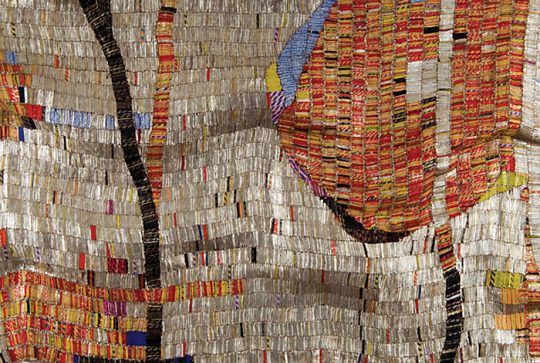
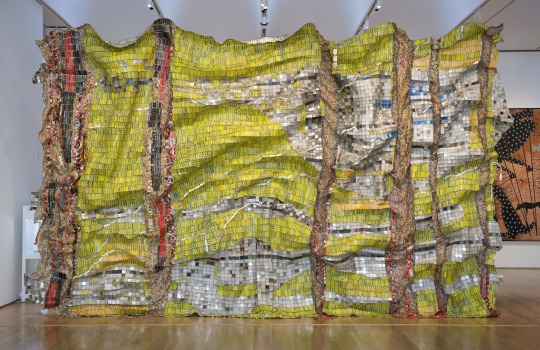
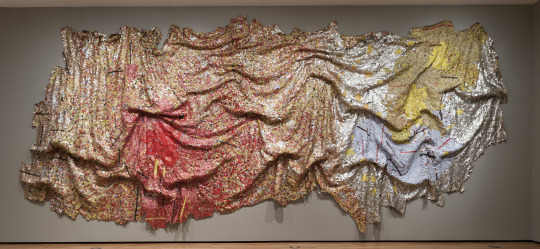
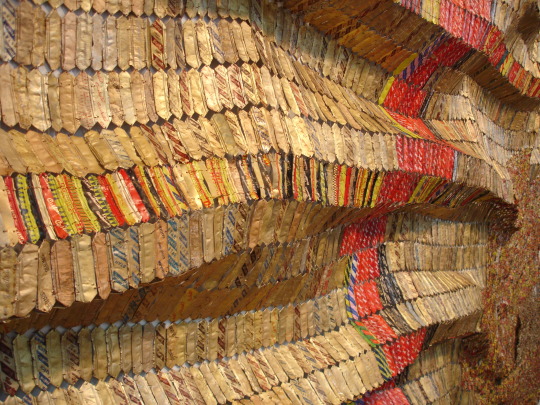
Takashi Murakami
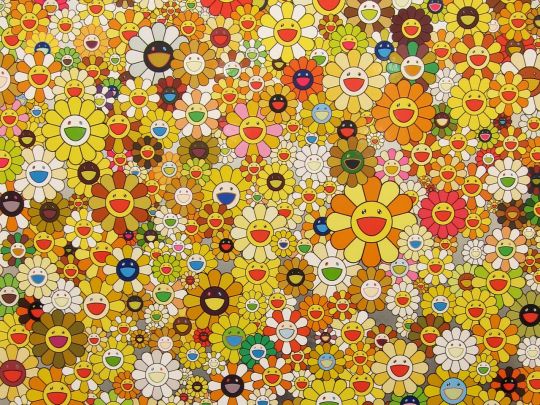
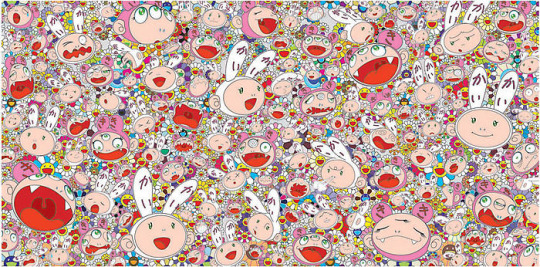
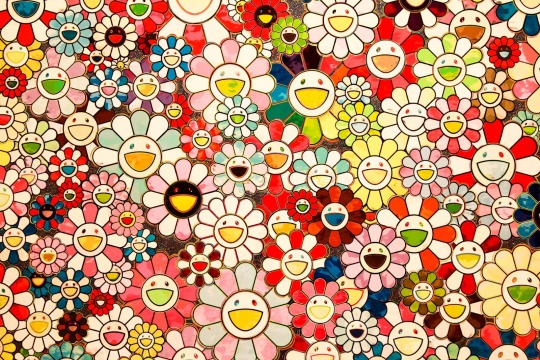
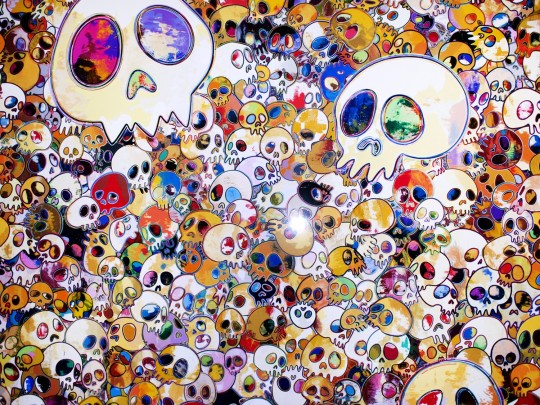
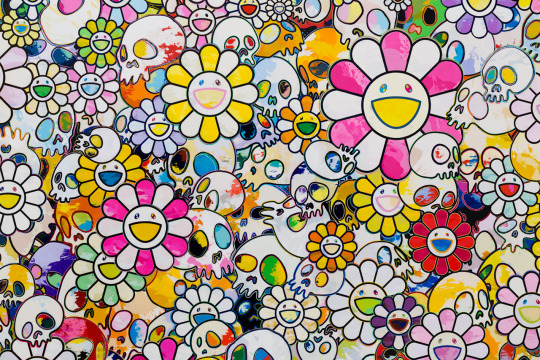
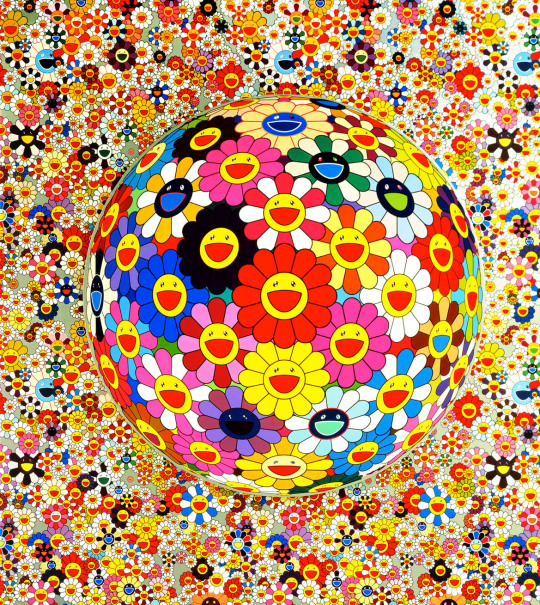
Polly Apfelbaum
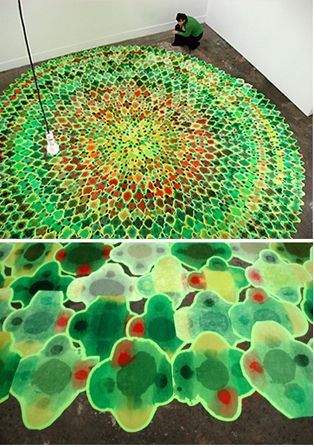
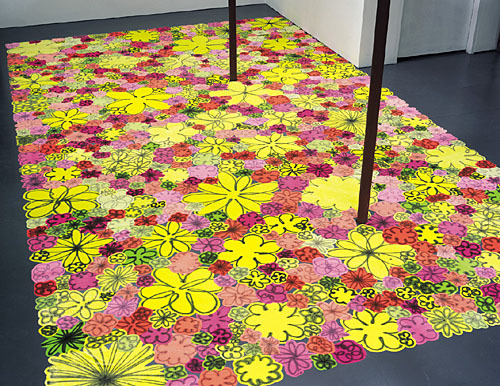
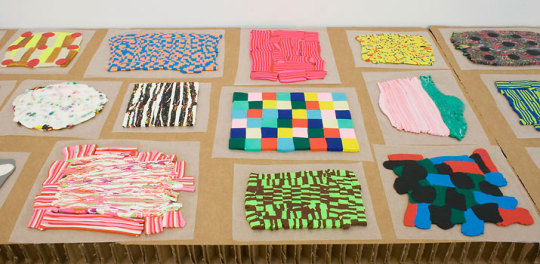
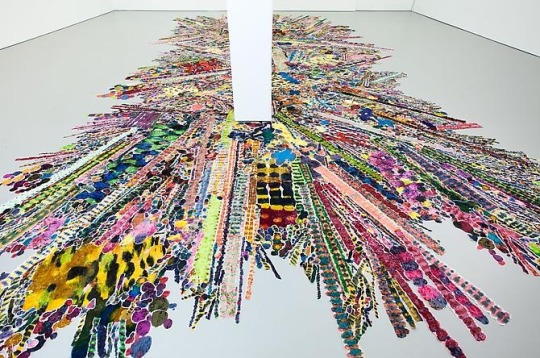
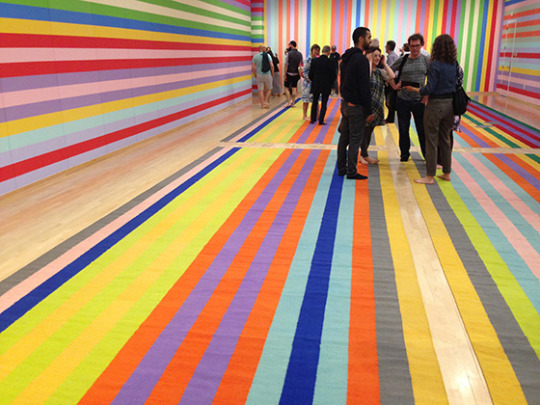
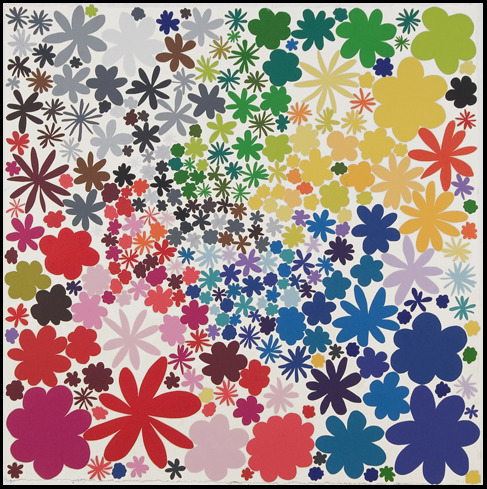
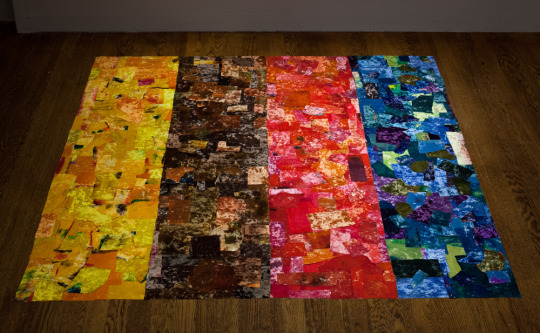
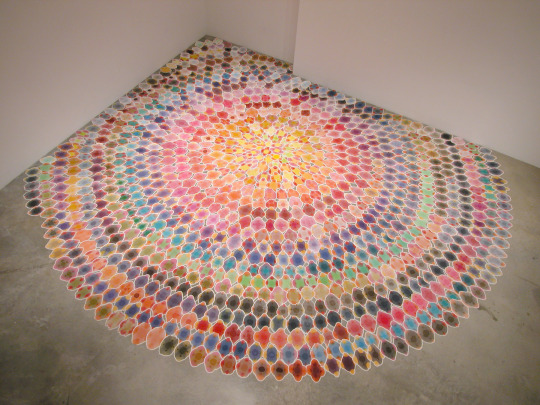
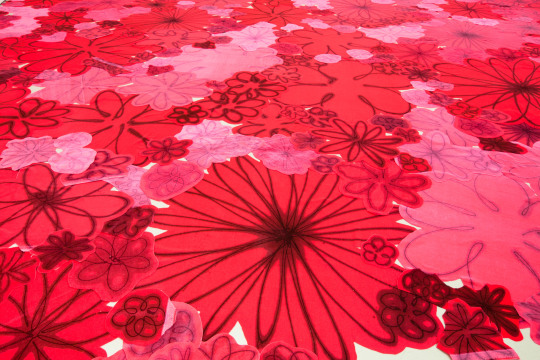
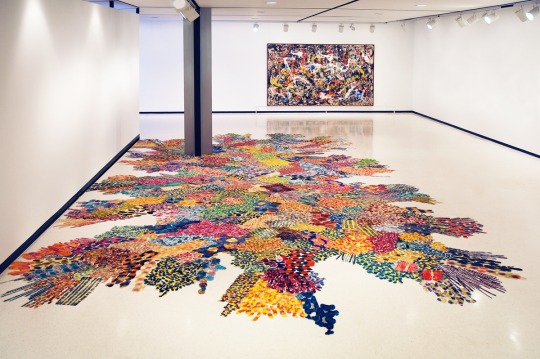
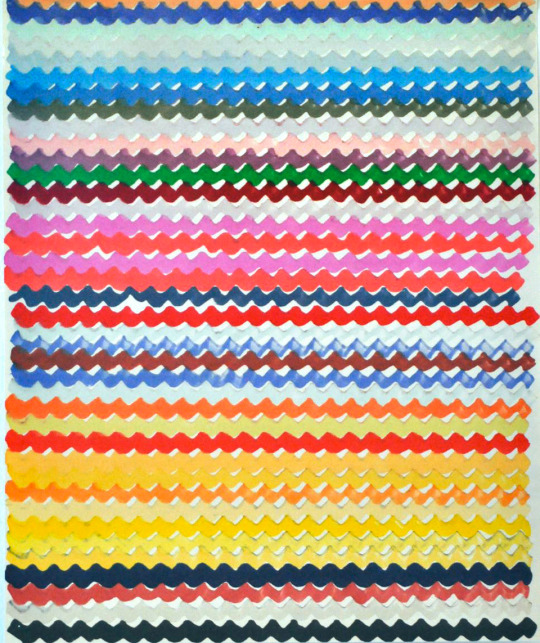
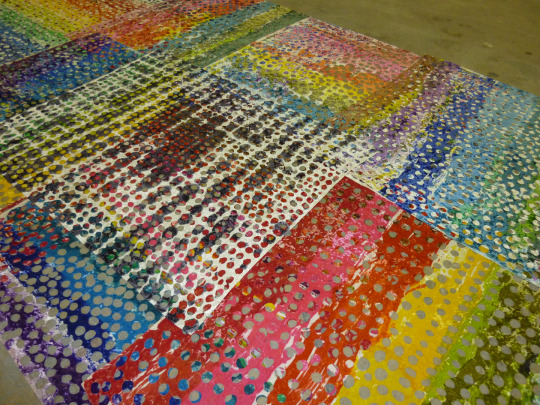
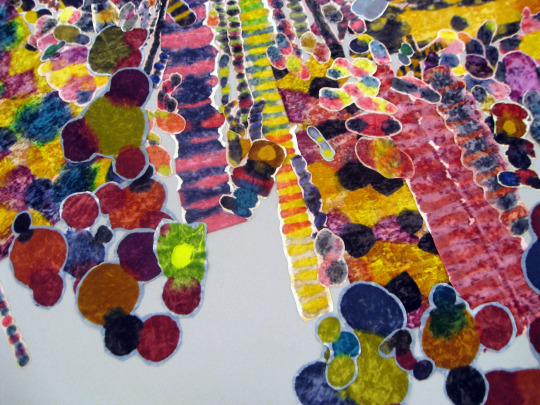
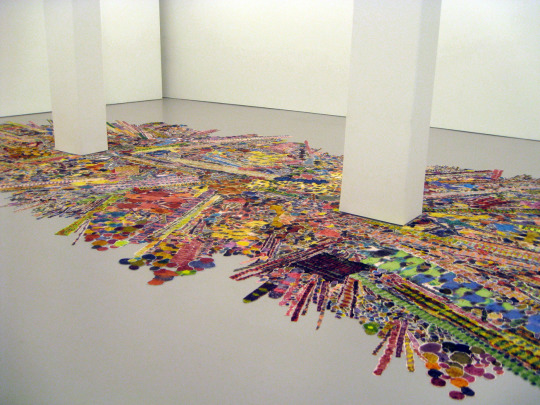
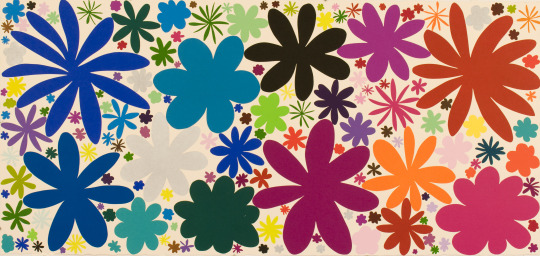
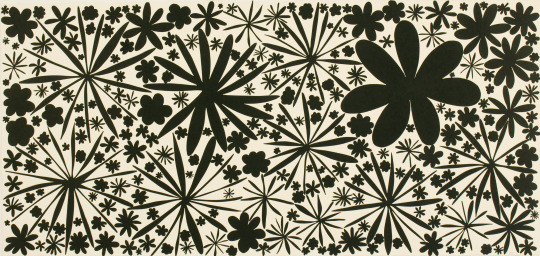
Marc Handelman
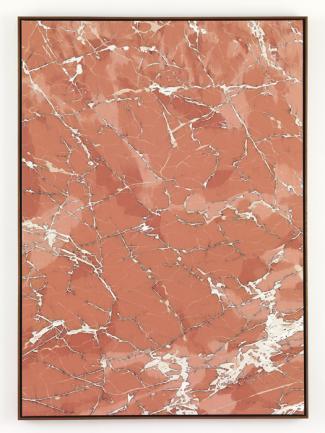
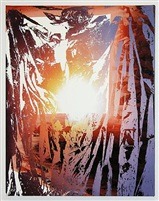
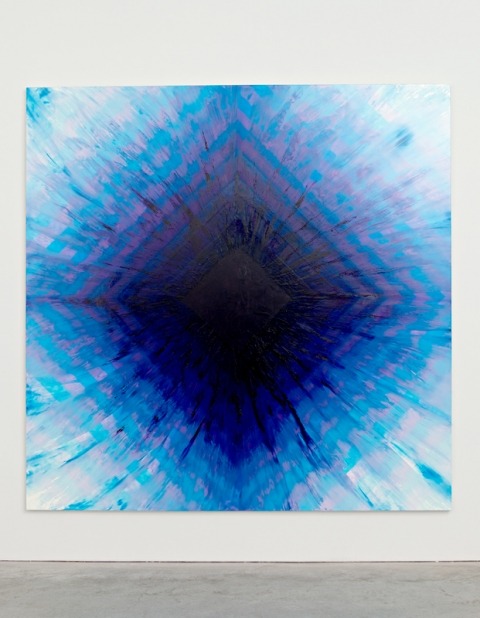
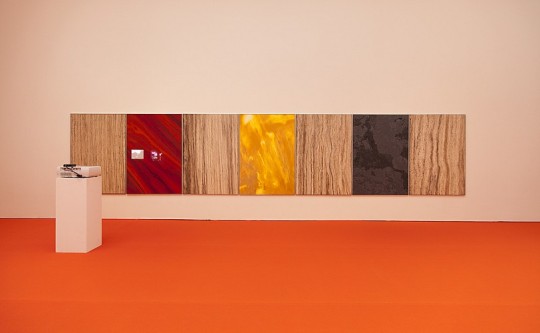
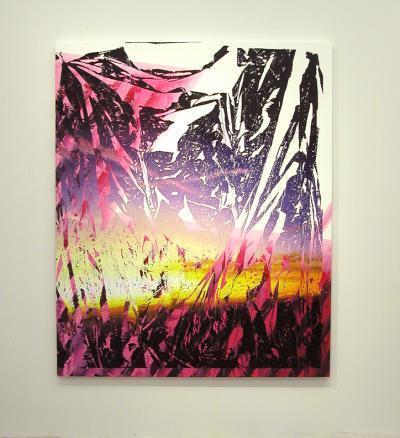
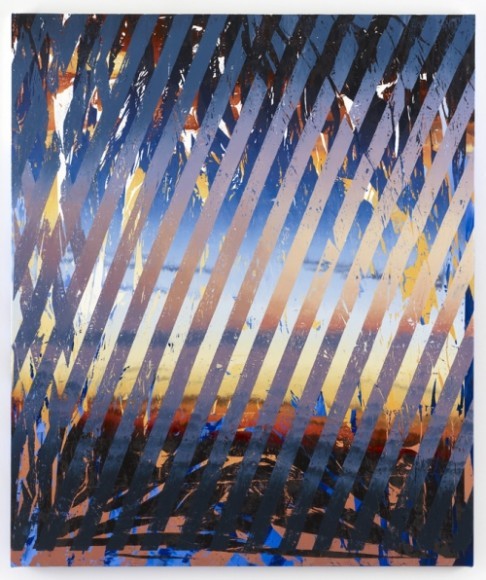
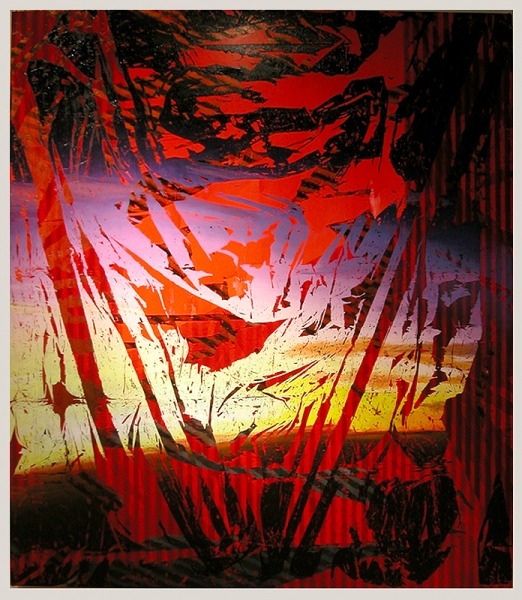
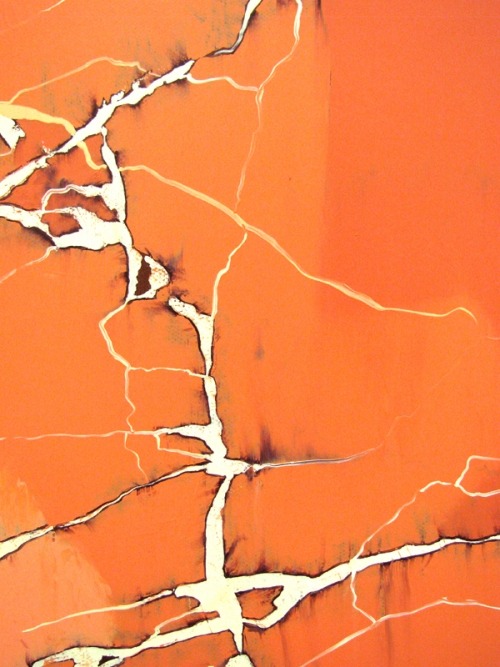
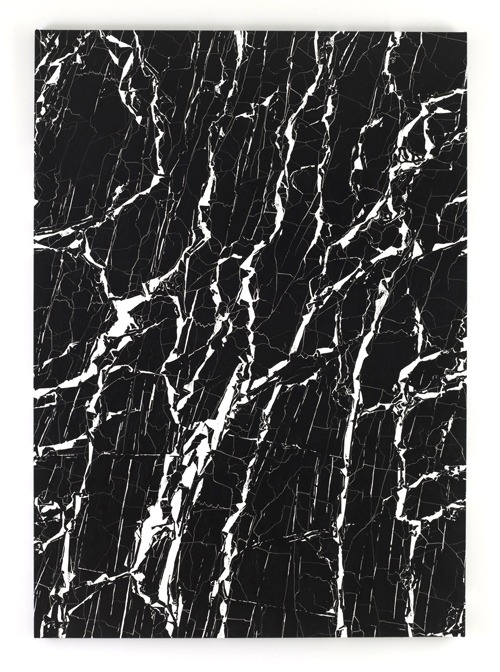
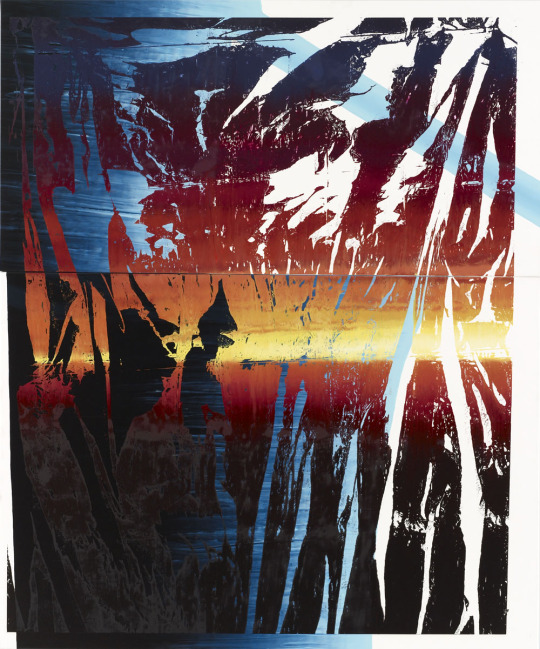
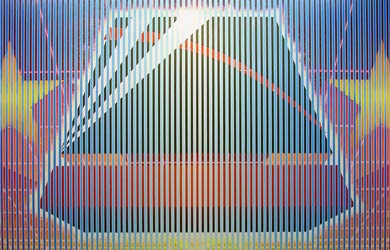

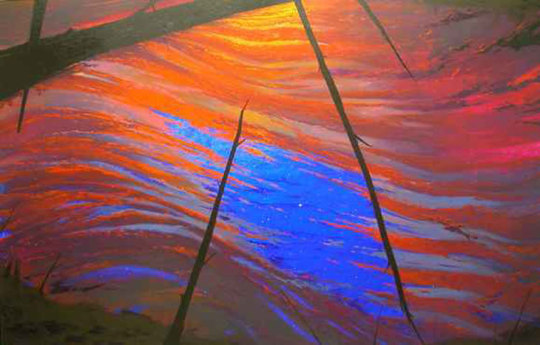
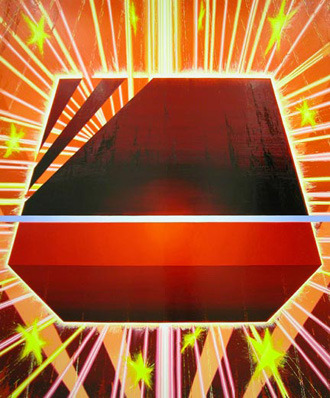
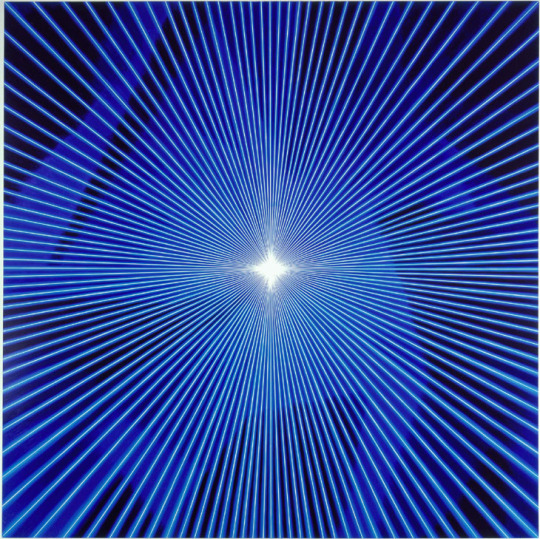
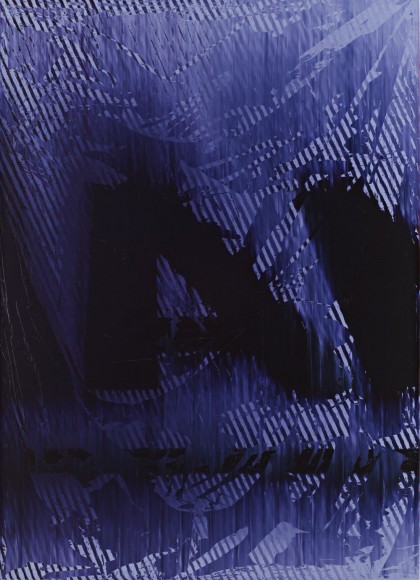
Katherine Bernhardt
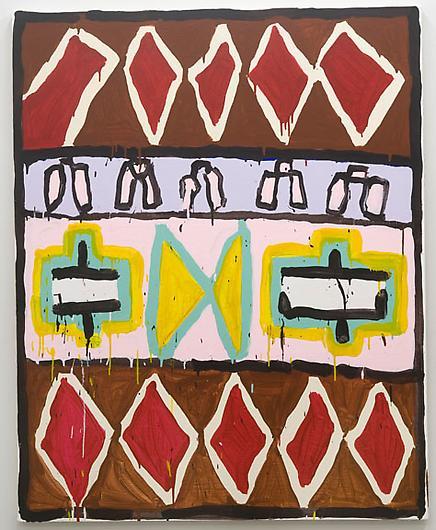
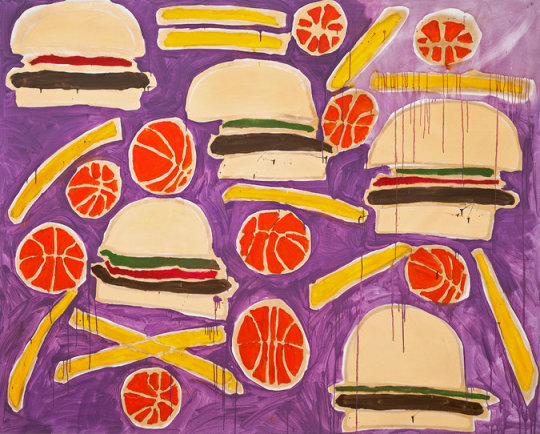
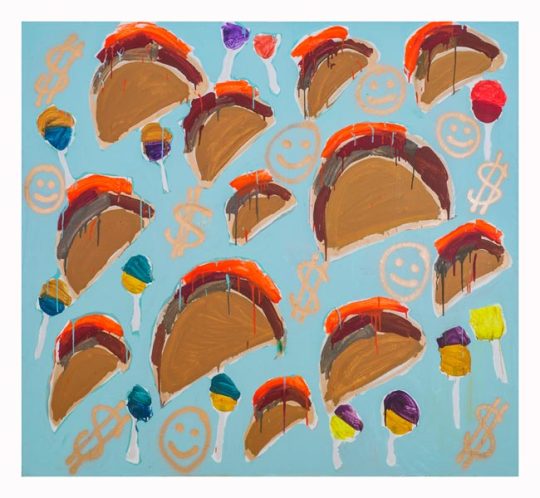
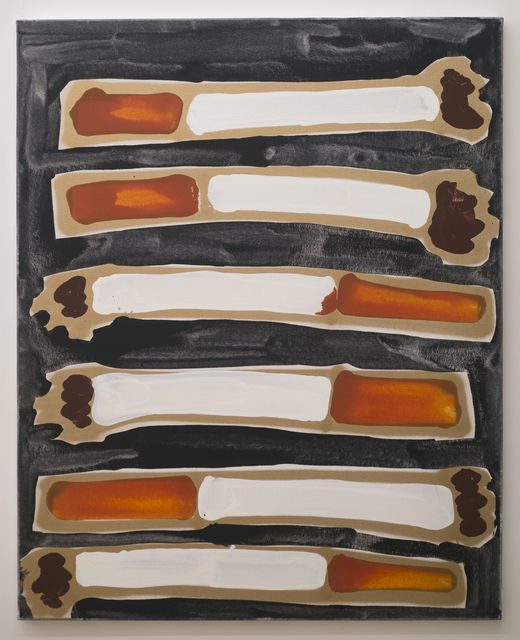
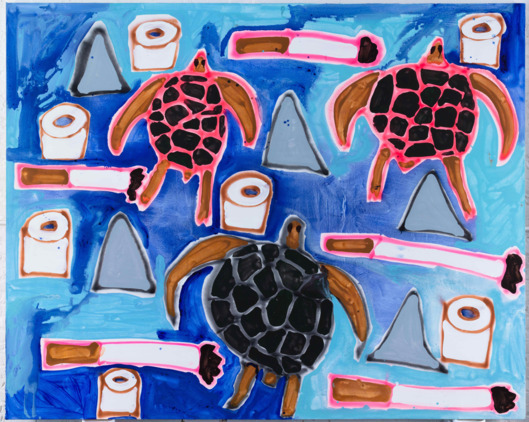
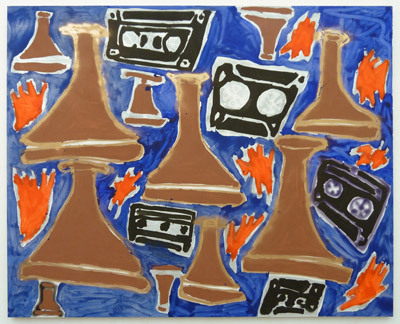
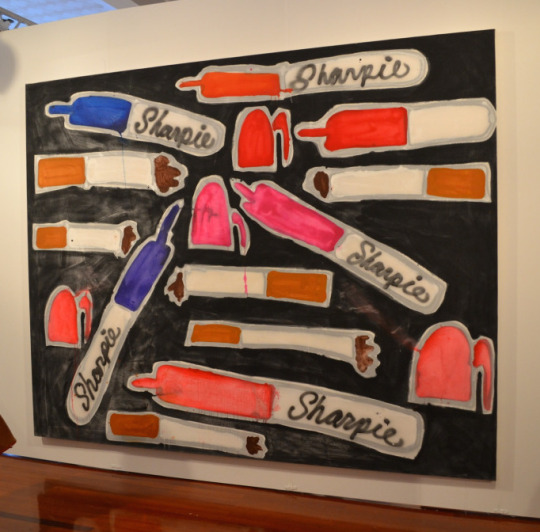
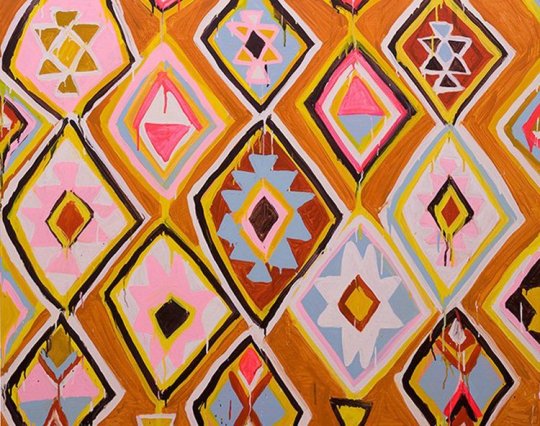
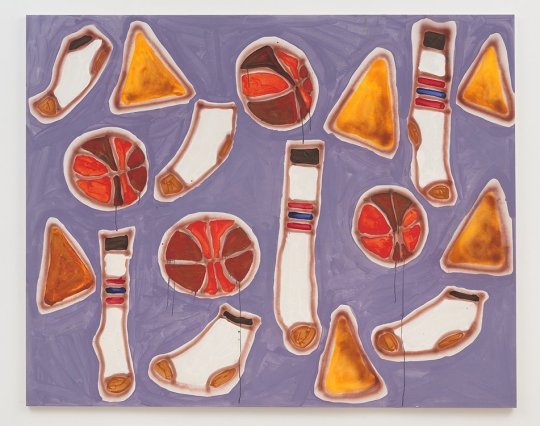
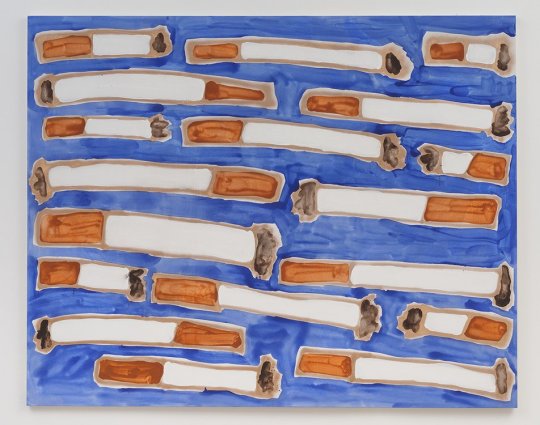
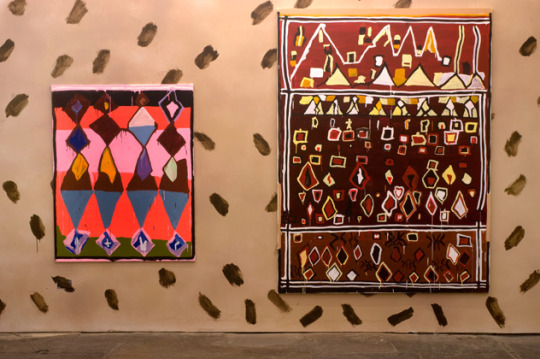
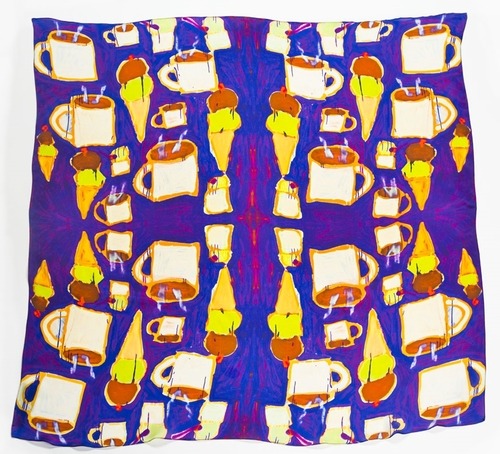
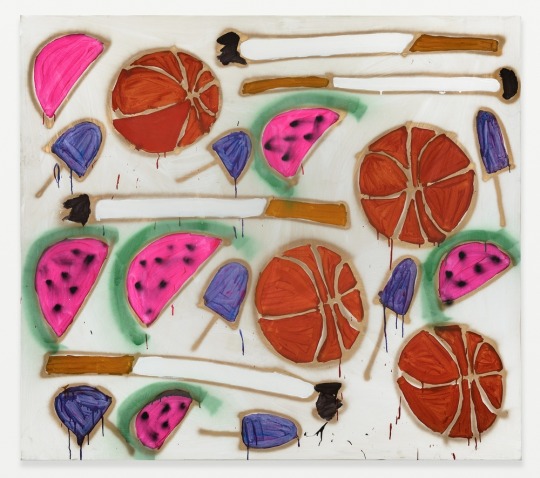
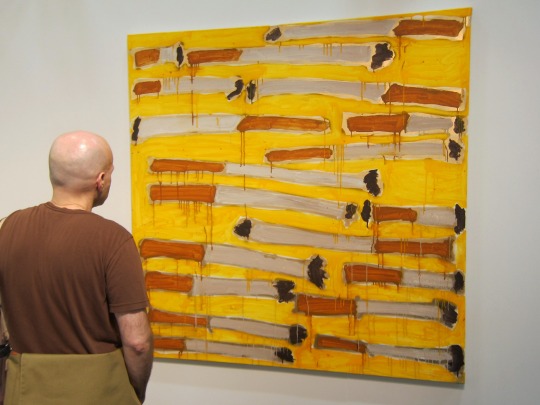
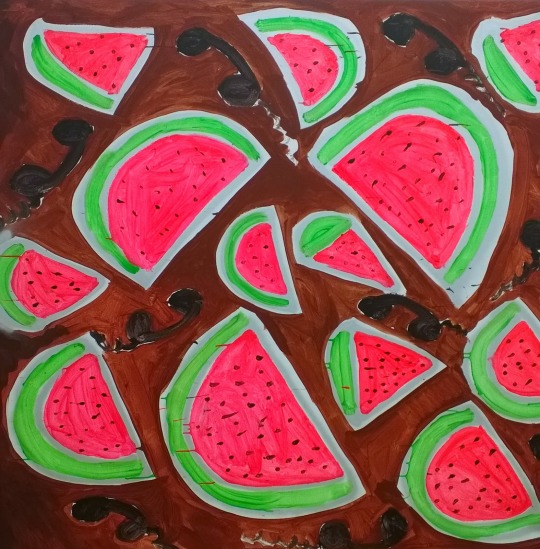
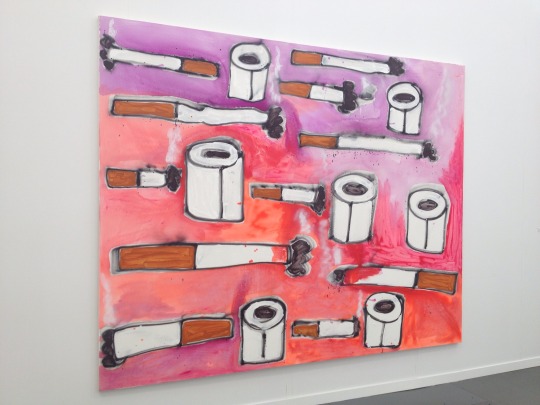
Texture/Pattern Project 1. In your sketch book draw out at least 4-5 distinct textures or patterns. Play and experiment. Look at the textures you might have around the house. How could you translate them onto a two dimensional surface? Draw each texture or pattern in a thumbnail shape (no less than a 1″x1″ square) this that you do not have to fill an entire page.
2. Once you have created your patterns and textures you will find an image that is of interest to you from a magazine, newspaper, picture, image you print out, etc.
3. You are going to recreate this image on a piece of bristol paper (if you don’t have access to your bristol you can use a piece of computer paper). You will recreate this image using the textures and patterns you created with your thumb nails. Each texture or pattern you use must replace a color/value in your original image. You must choose your textures or patterns appropriately to convincingly recreate the value changes in the image with only a texture or pattern. Therefore you may want to tweak your original texture and pattern designs to account for apparent value changes in you image. If there is a darker area on your original image, you might want to make your pattern more condensed and smaller. If there is a lighter area on your original image, you might want to make the pattern larger and less condensed.
Also depending on your image you may need to create a few more textures or patterns. (Textures or patterns can also be specific to the image, for example: if wood is representing in your image then you may want to create a wood pattern for these areas of your image - you do not have to though.)
4. Your recreated image will be in back and white using the different patterns and textures to distinguish the areas of value. This project should be done in micron pen and sharpie. All colors and values in your image must be translated to a texture or pattern.
Project examples
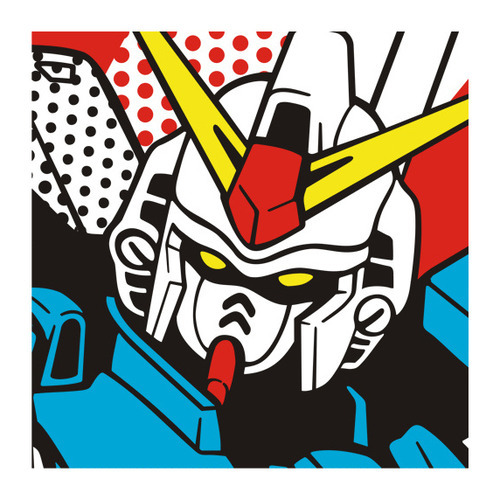
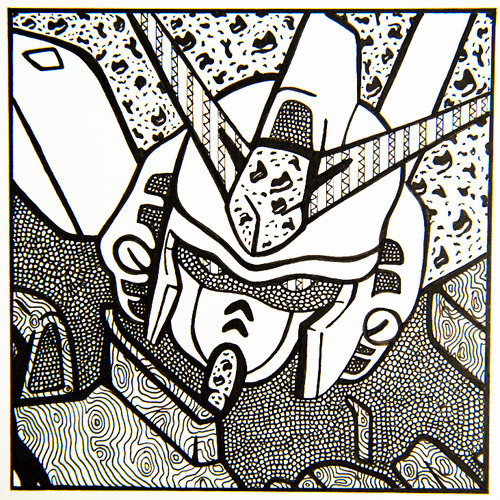
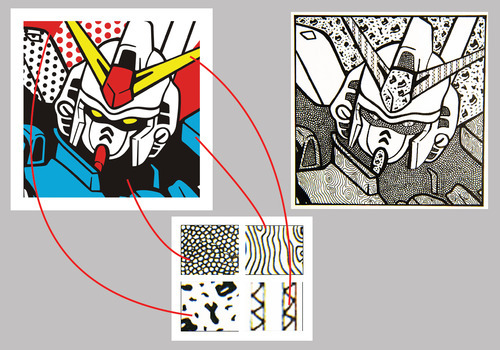
Final Product In the end you should have 3 part for this project. 1. The original image in presentation format on a piece of bristol paper. 2. Thumb nail sketches. 3.The final recreated image (on bristol paper) with all values converted to textures and patterns.
*Again if you do not have access to your bristol paper you may use computer paper.
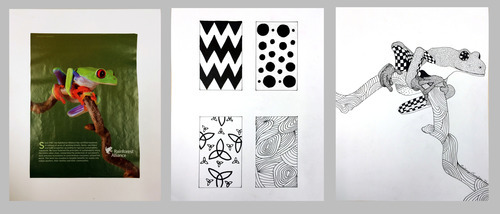
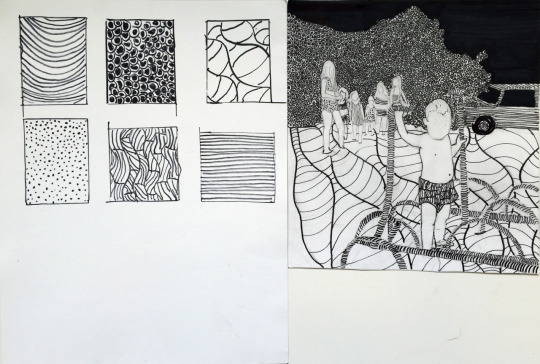
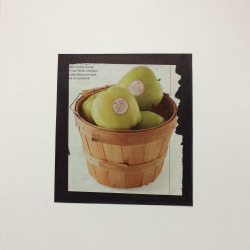
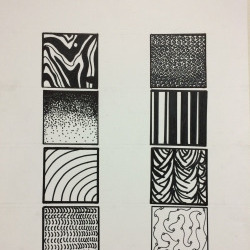
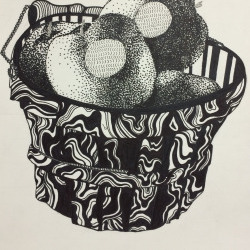
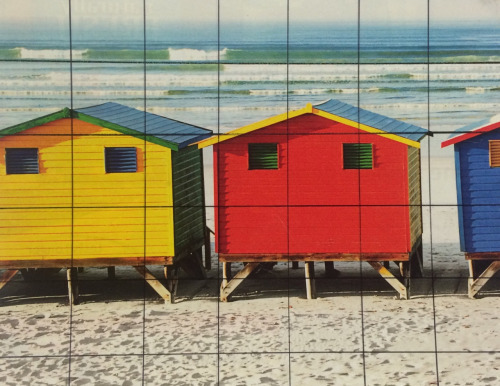
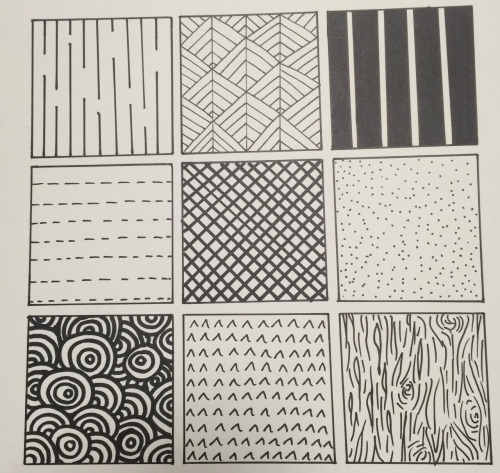
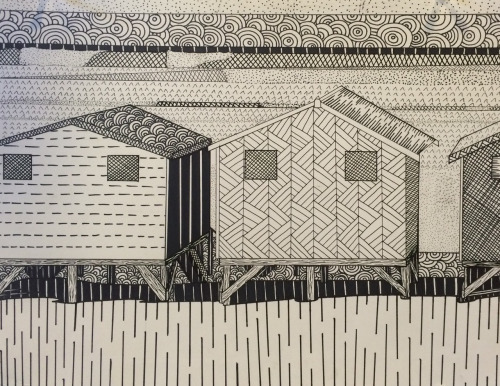
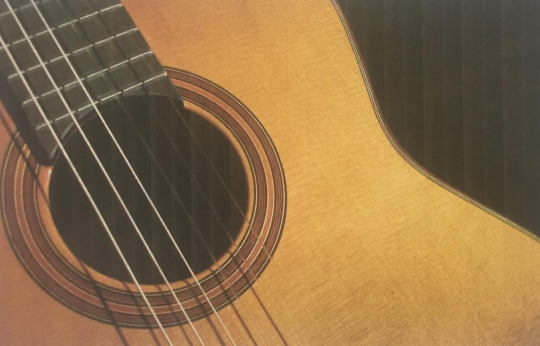
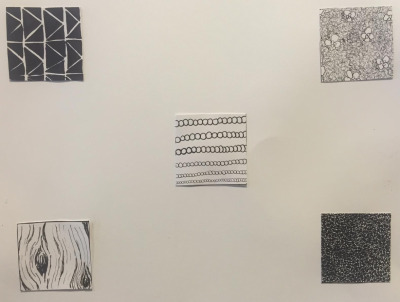
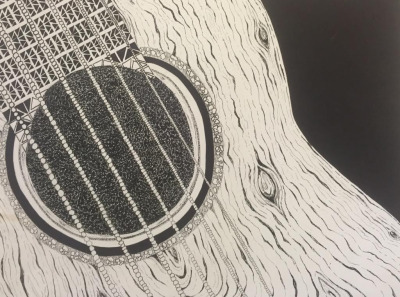
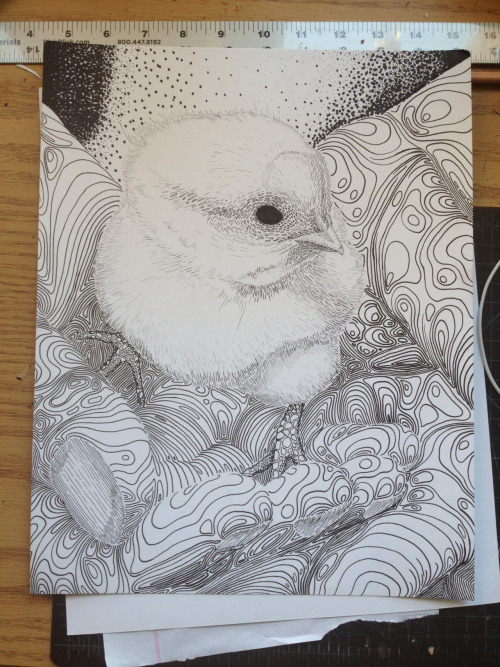
9 notes
·
View notes
Text

Navajo Rug 'Tree Of Life' by Daisy Nockideneh. The Nockideneh weavers are noted for their pictorial weaving created with unique techniques // via @womansart1 on twitter
7 notes
·
View notes
Text

Navajo Rug 'Tree Of Life' by Daisy Nockideneh. The Nockideneh weavers are noted for their pictorial weaving created with unique techniques
7 notes
·
View notes
Text
The Nazmiyal Rugs Collection
Nazmiyal Auctions provides 150 classic rugs to collectors, traders, and casual buyers in an internet sale. The auction catalogue contains carpets from private estates, in addition to bits from Nazmiyal rugs collection. The Nazmiyal rugs auction will be provided on Bidsquare an Online antique auctions website.
A 16th-century Egyptian Cairene rug will lead the rugs and carpets (USD 30,000 -- $50,000). Its colours are subdued and light, drawing attention to an elaborate vine and leaf pattern which encircles the central medallion.
Persian rugs are also available from the Nazmiyal classic and classic rugs auction. This traditional rug in the village of Heriz could be distinguished by straight lines and extremely stylized floral themes. The Persian rugs offered from the Nazmiyal rugs and rugs auction change in colour, although most include the classic blue and red pairing. 1 Persian Tabriz carpet, provided with a quote of $20,000 to $30,000, shows off a rainbow of colours. Bright yellow is put alongside forest green, light blue, pink-red, and deep freezer.
The Scandinavian classic rugs from the Nazmiyal rugs auction are famous due to their simplicity and clean lines. 1 Swedish kilim includes tight boxes of pale shade against a mint green background ($8,000 -- $10,000). This"Grön Äng" carpet comes in the workshop of Märta Måås-Fjetterström.
Collectors of announcement rugs will discover a choice of conversation bits in the Nazmiyal classic and classic rugs sale. One of those lots is that a 1980s weaving in the Soviet-Afghan War ($200 -- $400). In this carpet, many tools of warfare are put alongside national objects such as flowers, combs, and tea sets. A classic pictorial needlepoint carpet can be available, probably produced round the 1950s ($300 -- $500). Its details comprise an imposing castle in the background, many sky-reaching Easter lilies, along with a calm peacock from the foreground of this scene.
The auction will include other classic rugs:
* Tightly-woven Navajo carpeting with clean geometric lines ($10,000 -- $15,000)
* Chinese dragon carpeting with a cloud boundary and centre monster ($5,000 -- $8,000)
* Mid-century Moroccan folk art carpet with diamonds, stripes, etc. ($2,000 -- $4,000)
* Many collections of Sarkoy kilim bags in the Balkans ($300 -- $500)
Founded in 1980, Nazmiyal provides one of the greatest carpet collections in new york. Nazmiyal keeps a Manhattan gallery when offering a number of carpet and carpet auctions every year. The Nazmiyal Auctions team has experience in classic rugs, modern rugs, and everything in between.
0 notes
Photo

Native American pictorial weaving, Hastiin Klah or Gladys Manuelito Navajo, circa 1925, attributed to Hastiin Klah (1867-1937) or Gladys Manuelito (1893-1987); sandpainting weaving, 'Whirling Log' design, from the Nightway Chant, tightly woven, native handspun wool; 66" x 68"
1 note
·
View note
Photo

Collection Connections: Treasures from the Vault
Navajo
Pictorial Rug with Cattle, ca. 1875-1910
wool, dyes
Gift of Adam and Larry Lazar in memory of Burt and Brenda Lazar
Pictorial Rug with Cattle is part of The Tucson Museum of Art (TMA) collection donated by the Lazar family. The weaving originated in the last quarter of the nineteenth century and features steers and chickens on a background field of bright red flannel. There are vivid indigo blue and black colors present on both types of animals in an alternating pattern.
Animal forms that appear in pictorial weavings of the Navajo people are often portrayed as symbols of customs, history, and economic status. With the demands of traders and collectors, pictorial representations increased during this period. Interestingly, as horses and cattle were held in high regard and signify wealth and power in Navajo tradition, chickens had little financial significance. What message, if any, do you believe the weaver is trying to convey in this piece?
0 notes
Photo

Navajo pictorial baskets by Native American master weaver Elsie Holiday.”
Traditional baskets were born way back with our ancestors. The first basket was woven by Changing Woman,” Holiday explains. Changing Woman, or Asdzáá Nádleehé, represents the perfection of creation and the cyclical nature of time. ”There’s a story to it but I cannot really tell it because that’s my protection. But we use our traditional baskets for healing and in weddings and births.”
In the Navajo language, there are no words for art or religion. A single word encompasses both: hózhó. Defining the essence of Navajo philosophy, hózhó stands for beauty and harmony, and expresses the idea of striving for balance.
Hand-woven baskets are material representations of hózhó. They are used in ceremonies to restore balance when it has been broken, for example by an illness or an accident.Holiday is left-handed. Her baskets thus have a clockwise-running weave. ”This is important in ceremonies because in our tradition, this is the direction in which things move,” she explains, tracing the circles of her basket with her finger. ”For example in weddings, the left weave brings the couple good luck in their shared journey.”
Read the whole article http://handeyemagazine.com/content/heritage-keeper
4 notes
·
View notes
Photo

Navajo pictorial baskets by Native American master weaver Elsie Holiday.”
Traditional baskets were born way back with our ancestors. The first basket was woven by Changing Woman,” Holiday explains. Changing Woman, or Asdzáá Nádleehé, represents the perfection of creation and the cyclical nature of time. ”There’s a story to it but I cannot really tell it because that’s my protection. But we use our traditional baskets for healing and in weddings and births.”
In the Navajo language, there are no words for art or religion. A single word encompasses both: hózhó. Defining the essence of Navajo philosophy, hózhó stands for beauty and harmony, and expresses the idea of striving for balance.
Hand-woven baskets are material representations of hózhó. They are used in ceremonies to restore balance when it has been broken, for example by an illness or an accident.Holiday is left-handed. Her baskets thus have a clockwise-running weave. ”This is important in ceremonies because in our tradition, this is the direction in which things move,” she explains, tracing the circles of her basket with her finger. ”For example in weddings, the left weave brings the couple good luck in their shared journey.”
Read the whole article http://handeyemagazine.com/content/heritage-keeper
4 notes
·
View notes
Photo

Navajo pictorial baskets by Native American master weaver Elsie Holiday.”
Traditional baskets were born way back with our ancestors. The first basket was woven by Changing Woman,” Holiday explains. Changing Woman, or Asdzáá Nádleehé, represents the perfection of creation and the cyclical nature of time. ”There’s a story to it but I cannot really tell it because that’s my protection. But we use our traditional baskets for healing and in weddings and births.”
In the Navajo language, there are no words for art or religion. A single word encompasses both: hózhó. Defining the essence of Navajo philosophy, hózhó stands for beauty and harmony, and expresses the idea of striving for balance.
Hand-woven baskets are material representations of hózhó. They are used in ceremonies to restore balance when it has been broken, for example by an illness or an accident.Holiday is left-handed. Her baskets thus have a clockwise-running weave. ”This is important in ceremonies because in our tradition, this is the direction in which things move,” she explains, tracing the circles of her basket with her finger. ”For example in weddings, the left weave brings the couple good luck in their shared journey.”
Read the whole article http://handeyemagazine.com/content/heritage-keeper
1 note
·
View note